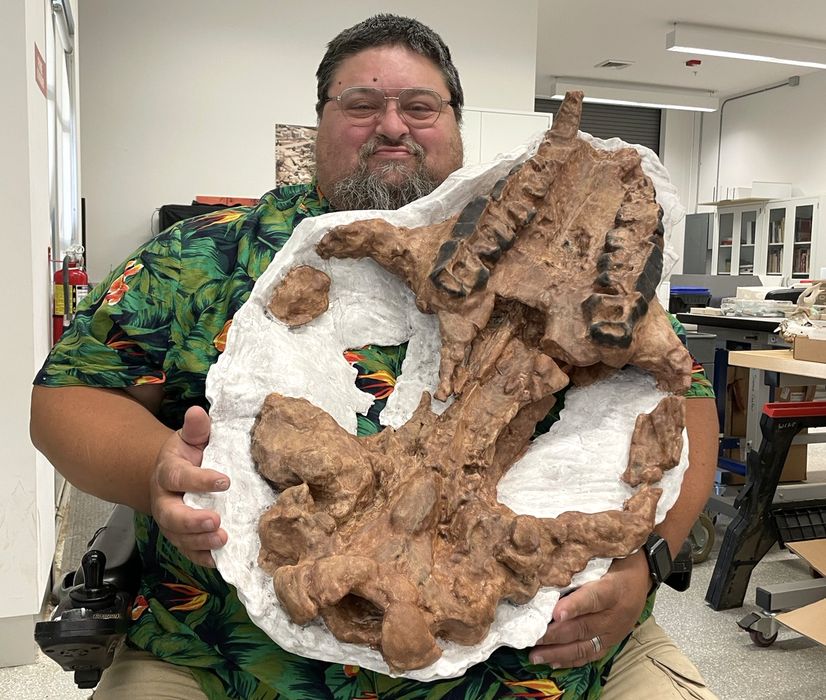
This week’s selection is the Zaisanamynodon fossil print by the Western Science Center.
In a recent post, paleontologist and executive director of the Western Science Center, Alton Dooley, displayed an incredible 3D print of a fossil.
The subject of the print is a Zaisanamynodon cranium. A Zaisanamynodon is an extinct member of the subfamily Amynodontinae, which is related to today’s rhinoceros. These creatures were semi-aquatic, and might resemble a hippopotamus with rhinoceros horns. Personally, they don’t sound very inviting, but here the 3D print may be calmly inspected.
According to Dooley, the print was made from a 3D scan of the original fossil, which is held at the UC Berkeley Museum of Paleontology. The fossil was originally located in the John Day Fossil Beds National Monument in Oregon.
The print was made as part of a group of prints for UC, which intends on incorporating them into their displays and educational programs.
This is a rather large print — signifying the huge size of the Zaisanamynodon — and I wondered what equipment was used to print it. Dooley explained in a post:
“We use Raise 3D Pros and LulzBot TAZ6s; each has a build volume of about 1 cubic foot, so they are pretty big. The print in the photo is made of 6 separate pieces glued together.”
This is an excellent example of how 3D printing can expand and invigorate research: replicas of an irreplaceable original piece are prepared and distributed for scientific and educational use.
More than one can be made, and if by chance they are damaged, it’s easily possible to make more copies. Meanwhile, the original can remain safe and secure in controlled storage, awaiting the development of future inspection methods.
Via Mastodon and the Western Science Center
